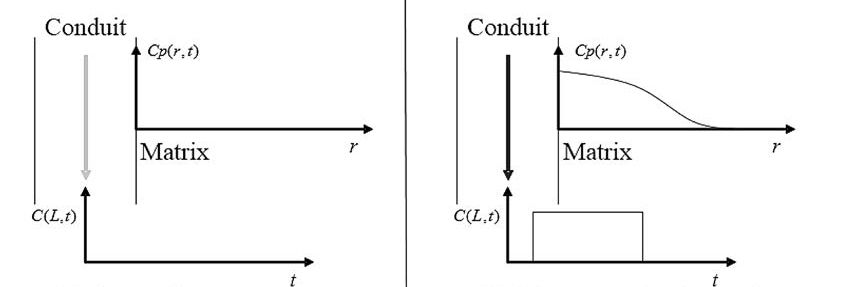Gaussian filter to process tracer breakthrough curves
DOI:
https://doi.org/10.3986/ac.v48i2.7269Povzetek
Breakthrough curves in hydrogeology are similar to seismograms in containing a variety of undesired noises and regular interferences characterized with high frequency. In this paper, Gaussian filter for processing seismic waves is used to retain low-frequency trend of breakthrough curves and remove away high-frequency fluctuations. At first, the mathematical fundamental of the filter is introduced. Then the filter is applied to process four breakthrough curves measured in laboratory experiments, in which Gaussian parameter is set to be 0.2 and 0.5. Finally, a breakthrough curve in field test is processed with different Gaussian parameters. The results demonstrate how the parameter controls the cutting-off frequency and the filter is well controllable and very efficient in acquiring the primary trend of the curves.
Key words: Gaussian filter; convolution; breakthrough curves, cutting-off frequency, noises.
Analiza sledilnih krivulj z Gaussovimi filtri
Sledilne krivulje (krivulja časovne odvisnosti koncentracije povrnjenega sledila) v hidrogeologiji so podobno kot seizmogrami v geofiziki obremenjene z nezaželenimi visokofrekvenčnimi šumi in interferencami. V tem članku uporabimo Gaussov filter, primarno namenjen obdelavi seizmičnih podatkov, za odstanitev visokofrekvenčnih šumov iz sledilnih krivulj. Najprej predstavimo matematične osnove filtriranja, potem Gaussov filter z parametrom 0,2 in 0,5 uporabimo na štirih sledilnih krivuljah, dobljenih v laboratorijskih pogojih. Na koncu z različnimi Gaussovimi parametri obravnavamo sledilno krivuljo, dobljeno pri sledenju v naravi. Z rezultati prikažemo vpliv izbranih parametrov na mejno frekvenco ter prilagodljivost , učinkovitost in uporabnost filtra za izluščenje primarnih značilnosti sledilnih krivulj.
Ključne besede: Gaussov filter, konvolucija, sledilne krivulje, mejne frekvence, šum.
Prenosi

Prenosi
Objavljeno
Kako citirati
Številka
Rubrike
Licenca
Avtorji jamčijo, da je delo njihova avtorska stvaritev, da v njem niso kršene avtorske pravice tretjih oseb ali kake druge pravice. V primeru zahtevkov tretjih oseb se avtorji zavezujejo, da bodo varovali interese založnika ter da bodo povrnili morebitno škodo.
Podrobneje v rubriki: Prispevki




